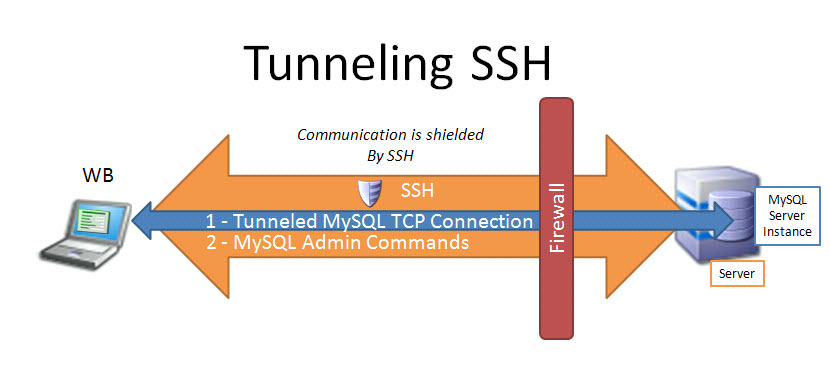

- #Putty create ssh tunnel how to#
- #Putty create ssh tunnel mac os x#
- #Putty create ssh tunnel windows 7#
- #Putty create ssh tunnel download#


We are looking for the entry that says we are forwarding the local port. Using the event logs in PuTTY we can verify that the tunnel has been created. however, we also should have the tunnel in place. The ssh terminal window will open and prompt for the password. Using the ADD button we create the record. This can be any high number port, above 1024 that is not in use. Then we add the destination of the service that we want to connect to, in our case the VNC service on the Linux host: 192.168.0.60:5902.
#Putty create ssh tunnel windows 7#
This is the local port that we will listen to on the Windows 7 system. and create a new local tunnel with the source port 4000 (123 in the image) and the destination localhost:3306 (localhost:456 in the image). Next, we add the source port, in this case, 9090. Start Putty and enter your usual connection settings (Hostname or IP address) In the tree on the left side, navigate to. You should see something similar to the following. This is where we define the PuTTY SSH Tunnel. There you have it, using Bitvise SSH Client to create a SSH Tunnel connection.With this complete and BEFORE, we connect we navigate to the SSH and Tunnels configuration page. Give it a try after the connection is established, you can do that by going to localhost: ( port ) in your browser to test if it’s loading the remote server’s content. So this way you will always have a “always-on” SSH tunnel connection to the server. One of the biggest advantage of using Bitvise SSH Client is that the SSH connection will never die, if you happen to be disconnected due to inactivity, it will try to re-establish the connection automatically. Once everything is done you can now login. Under Destination Host, enter the IP address of the remote server you wish to connect via SSH, put the port under Dest. Port can be many none occupied port but most likely you’d like to keep this consistent with the Destination Host’s port. Now go to C2S tab, add a new entry, set the Listen Interface to your local IP, List. You can save this setting as a new profile, for easier reusability later. SSH will always be on port 22, under the authentication section, enter your username and password. Additionally, port forwarding capability should be turned.

#Putty create ssh tunnel download#
Go download the app if you haven’t, when it first lunch, enter the corresponding destination server you’d like to connect. Setting up port forwarding, requires the use of an SSH client with the ability to create SSH tunnels. For local forwardings, PuTTY will listen on this port of your PC. There are other articles explains this in much detail, but my purpose here is to show you how you can use Bitvise SSH Client to establish a SSH Tunnel connection. Enter a source port number into the Source port box. In a nutshell, SSH Tunnel allows one to connect to a server’s service that aren’t exposed by other protocols.
#Putty create ssh tunnel how to#
How to Use Bitvise SSH Client To Create SSH Tunnel Connection But popular doesn’t necessary mean it’s good, for example, it doesn’t do a good job at establishing a solid SSH connections.īitvise SSH Client is a great alternative to Putty, not only does it have a much better UI, but also does SSH Tunnel as well. Most people might have heard of the app Putty which is the most popular third party SSH app. You need add-ons to add this very common feature into PowerShell. Windows PowerShell has no SSH support out of box. No way to establish a SSH connection on Windows without some sort of third party applications. Unlike all other OS, SSH on Windows have no native command (apps) to do it.
#Putty create ssh tunnel mac os x#
SSH on Windows requires a little more effort than Mac OS X and Linux.


 0 kommentar(er)
0 kommentar(er)
